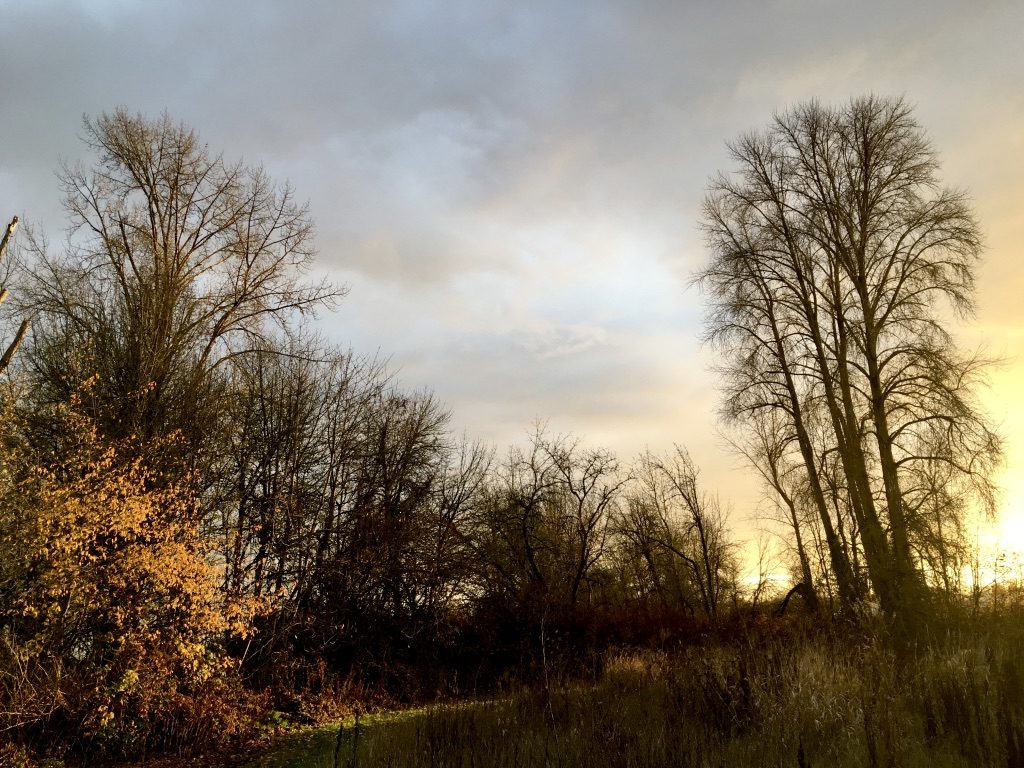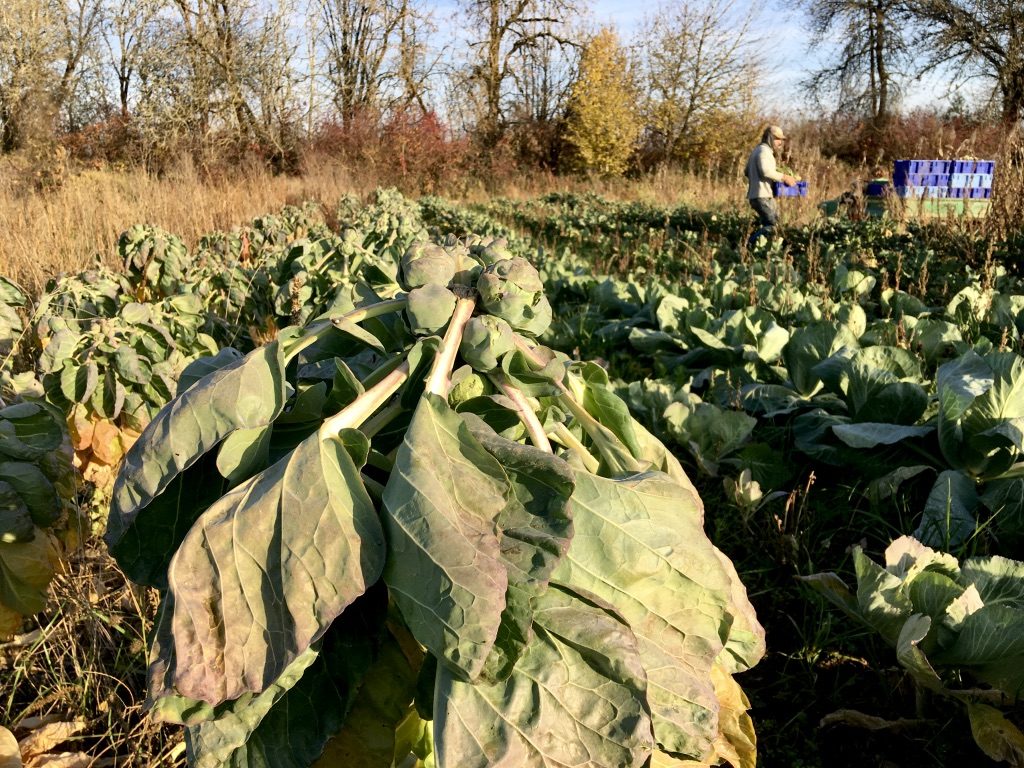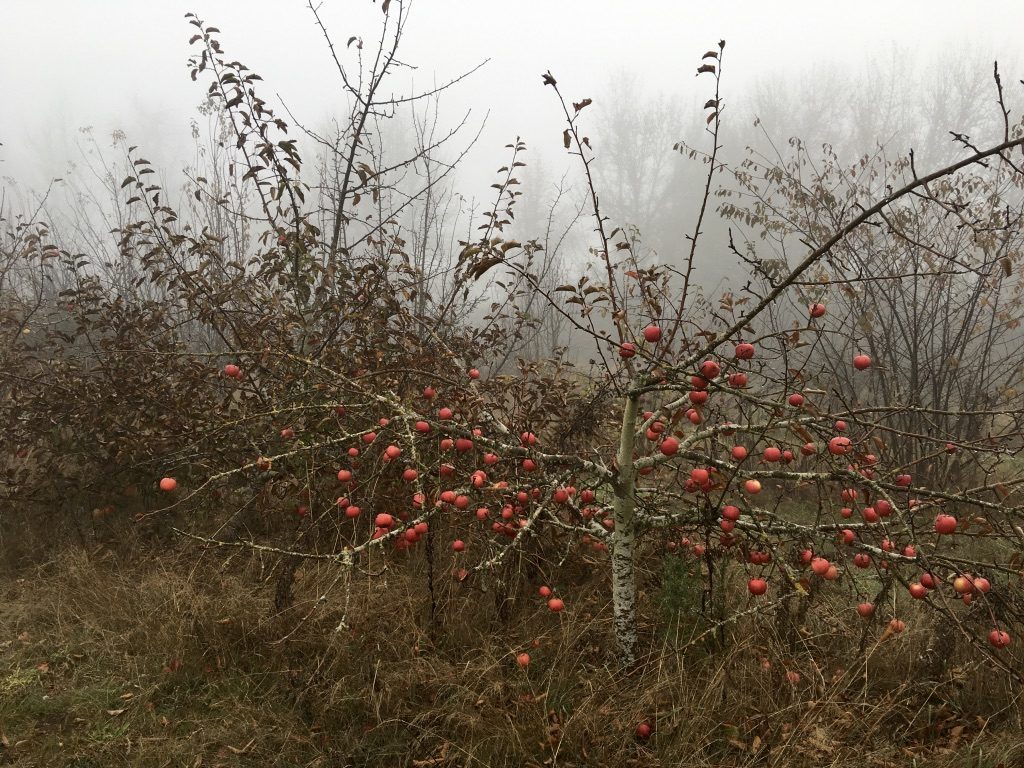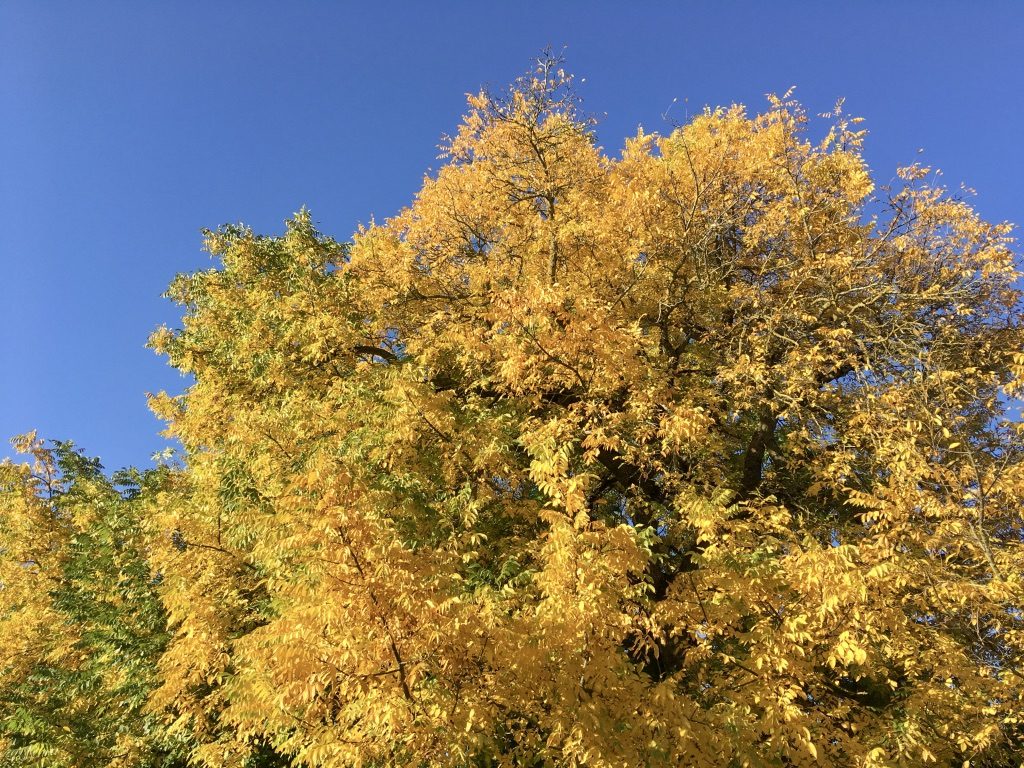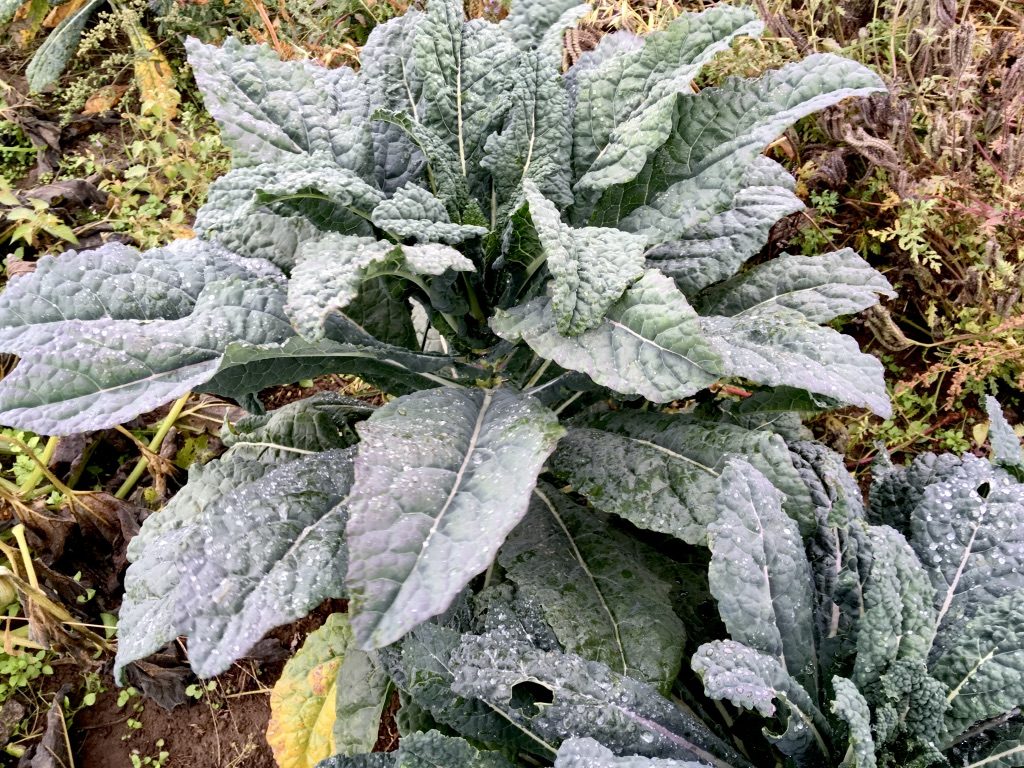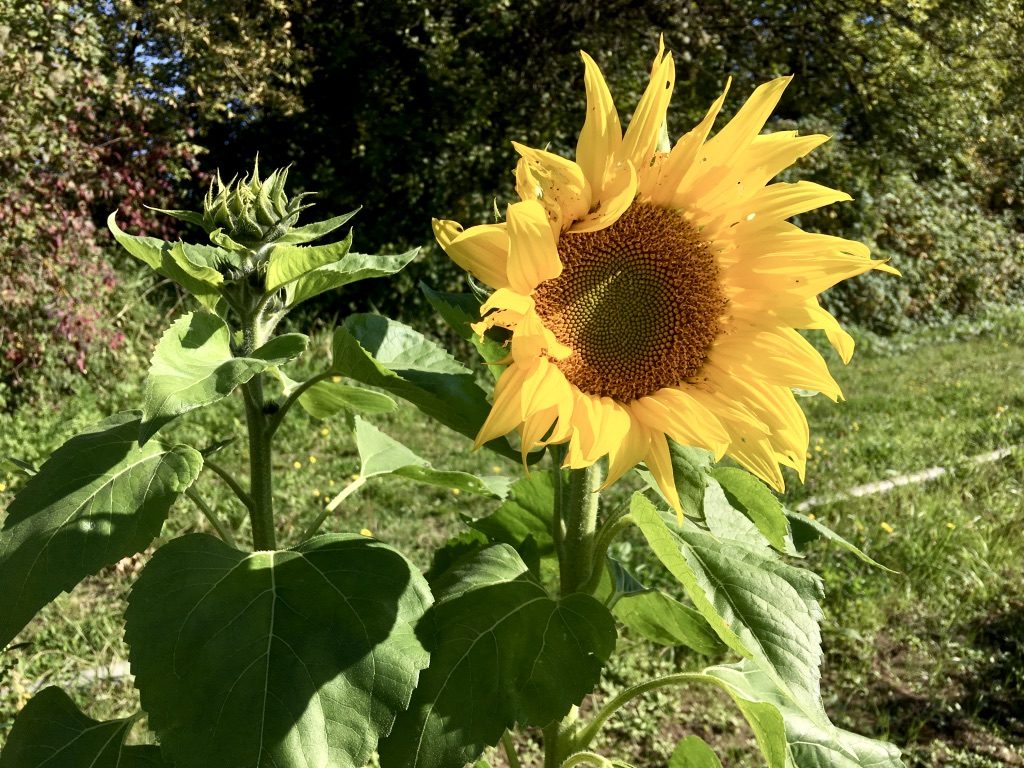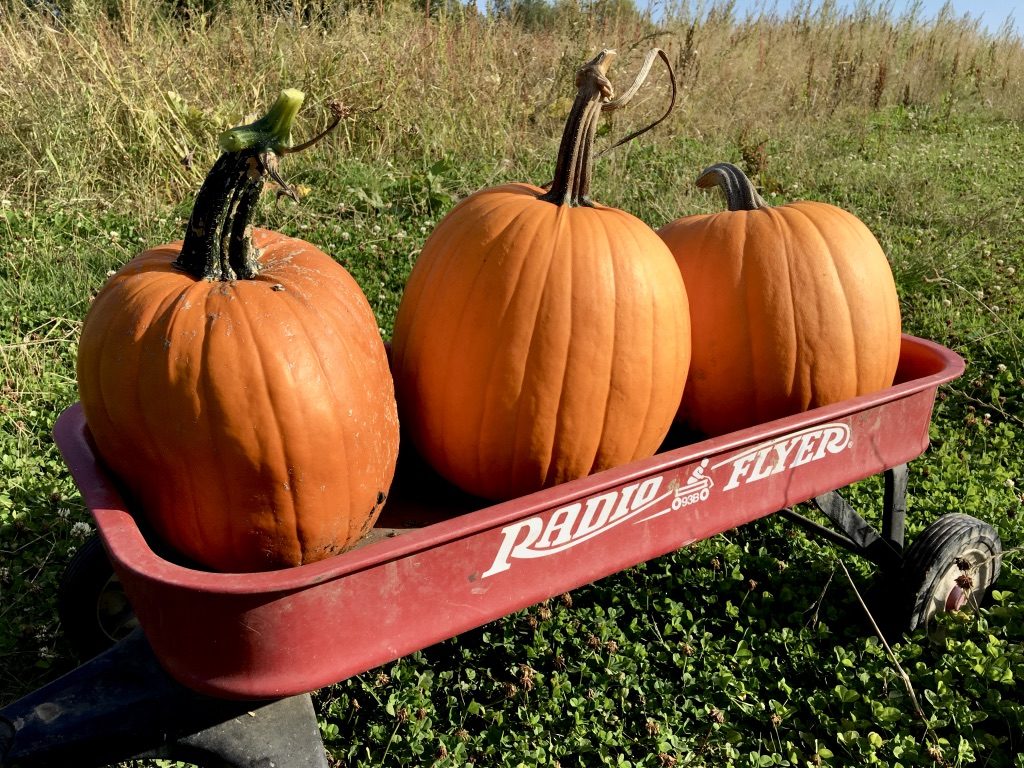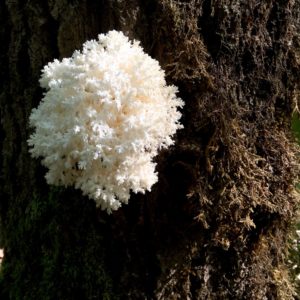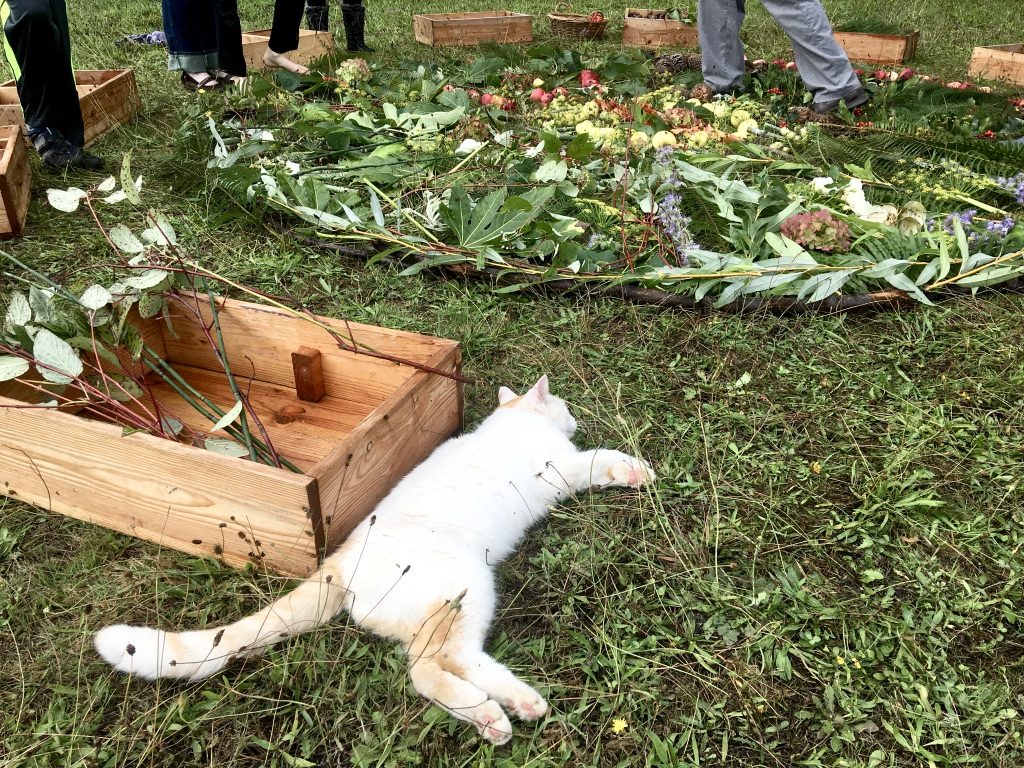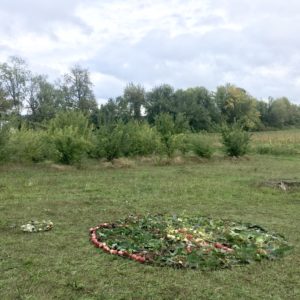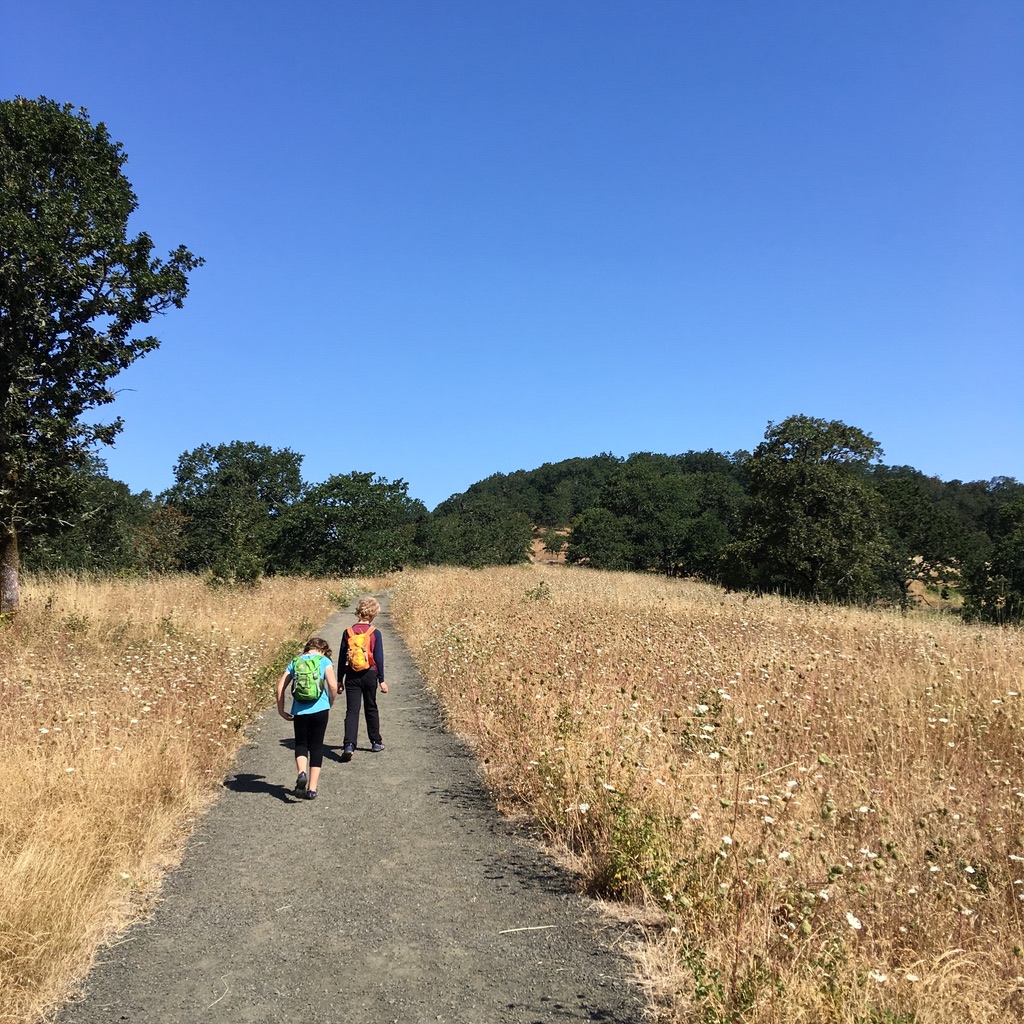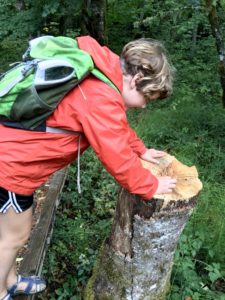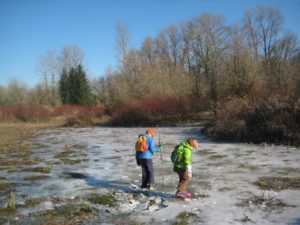
This week’s beautiful chicory mix!
While we are gearing up for plain old Halloween here in Yamhill County (see our note below about logistics!), in Seattle this week chefs, farmers, and eaters are celebrating “Chicory Week” — a week-long festival celebrating all things chicory.
Their timing is perfect, of course, seeing as how we are entering the long, beautiful chicory season now, which lines up with our coldest, darkest months.
Before we farmed ourselves, Casey and I couldn’t have told you much about the diverse, delicious chicory family of greens. Back then, salads meant lettuce, or maybe spinach. But, as we began creating the seasonal flow of vegetables for our year-round CSA, chicories quickly came to the forefront as a perfect green for the shoulder seasons.
So, what are chicories? Technically, “chicory” is a big family of greens that does include lettuce (and also dandelions!). But, when used as a culinary distinction, chicory refers to specific greens that are similar but also fundamentally different from lettuce — most of them with an Italian agricultural and culinary heritage. The chicory most people are familiar with is the vibrant red and white radicchio (so beautiful!), but the Italians have bred many more kinds, each with distinct coloration, flavor and shape. Some, like typical radicchio, are round and tightly wrapped. Others have a long shape. Others have even been selected for the shoots that grow out of the tops! Colors range from deep red to pink to dark green to chartreuse, with lots of bright white mixed in.
And, now, why do we love them so? From a farming standpoint, they fit a niche for salad greens that can be harvested even in the cold and wet months. They’re perfect for places like the Pacific Northwest (Seattle, the Willamette Valley) or Italy, where winters are generally milder, but still too dark, cold and wet for tender lettuces. We sow ours in late-summer, which gives them many months to grow and head up before the cold really hits. Most vegetables do very little growing in the darkest months, so we actually do much of our cold season cultivation in those last few months and weeks of summer, to get plants established that can hang out in the winter fields for harvest (or regrowth in the spring).
Once the radicchios and other chicories are a good size, they can withstand quite a lot of our typical winter weather, although you might not know it looking at our winter fields. At this point in the fall, you can more or less “see” the chicories when you look at a row, but by January or February, you will mostly see slimy leaves over round shapes. But, this, my friends is the true miracle of chicories …
Come mid-winter, we can cut those heads and with a few deft hand movements, peel back the protective outer wrapper leaves and find inside a brilliant, beautiful head of radicchio. Our other favorite type of chicory, castelfranco, has even withstood temperatures as low as 5.8F and still remained harvest-able and delicious! Not only does the cold not hurt chicories, it can enhance their coloration and flavor — producing brighter hues and mellowing the bitterness associated with these greens.
Because, yes, they are more bitter than lettuce or many other traditional salad greens. For chicory newbies, this can be a surprise at first. They are also sturdier in their texture — more toothsome, you might say. The Italians, some of the world’s first “foodies”! — have long delighted in that combination, and I think Americans in general have missed out on some of the great eating experiences that come with appreciating a full range of flavor palettes.
(We’ve missed out from a health-standpoint as well, as bitter vegetables aid in our digestion — but I tend to personally avoid arguments such as “Eat your vegetables, because they’re good for you,” favoring the “eat veggies because they’re delicious” approach.)
So, if you’re new to chicories, how should you begin learning to love this green?
First, appreciate its beauty, because this is a darned beautiful family of greens. This week’s mix is a great showcase of chicories’ wide range of shapes and colors.
Second, serve it like the Italians. You actually can just make a normal salad out of this mix, and Casey and I often do. But chicories can handle a much heavier salad dressing than lettuce, so think of your creamiest or thickest dressing. They also benefit from being dressed prior to serving, as the wilting can increase the eating pleasure. Some people even dress chicories salads with warm dressings to further wilt the leaves (bacon is often a component of such a salad — just saying).
Finally, eat it. I mean, give it a try again and again. With different toppings, dressings, etc. Casey and I have gotten to the point where we love these cold season salads so much that the idea of eating lettuce when it is cold outside sounds about as good as eating a popsicle! Our bodies crave the different texture and flavor this time of year, and we find that the bitter flavor of our salads offsets the sweeter flavors of the many roots and squashes we eat. There’s a sense of balance on our plates — vibrant, bitter salads next to bright orange, sweet squash. Such combinations have come to viscerally define our cold season eating experiences.
I know I often wax poetic about the joys of seasonal eating, and this is a great specific example of why I love eating what it is in season. My entire body, inside and out, gets to feel different in different parts of the year. Every sense is aligned with the shifts of the natural world.
And, why does this matter? One, it reminds me that I’m part of the natural world too. But, it’s also just interesting. And I think human beings like interesting things! It is interesting to experience the seasons change — to feel biting cold on my cheeks again for the first time in months, to see the falling leaves from the trees, to hear the geese honking as they fly over head, to smell the smoke from the wood stove. Likewise, it is interesting to taste new flavors — each successive apple variety as they ripen, the first of the Brussels sprouts (in this week’s share!), and yes even the bitter of the chicories, which be a mainstay going forward now.
May this meditation on chicories help motivate you to learn to love this truly wonderful family of greens. Enjoy all of this week’s vegetables!
Your farmers, Katie & Casey Kulla
~ ~ ~
Important note about Halloween pick-up!
As a reminder, tomorrow is Halloween! There is a trick-or-treating event on 3rd Street from 4-6 pm, which may increase congestion in the area. We will be open at 3 pm if you want to come before the event starts. Casey will also stick around until 7 pm (rather than the usual 6:30) so if you need to come later, he’ll be there. We hope it all goes smoothly for everyone!
~ ~ ~
Meet this week’s vegetables:
- Goldrush apples — One of our all-time favorite apples, for many of the same reasons we love chicories — it is an outstanding addition to our cold season CSA, capable of storing in good condition for months and months in our cooler. It has a very different flavor profile than other apples too, being exceptionally strong in flavor. It’s so sweet that I wouldn’t describe it as tart at all, but there is the complexity that an underlying tartness brings to the flavor too. It also has a unique texture.
- Cortland apples
- Mixed chicory salad mix
- Brussels sprouts!
- Fennel bulbs — Another great Italian vegetable! This time of year, I recommend adding chopped fennel bulb to a pan of mixed roasted vegetables for a very satisfying, warming dish.
- Dinosaur kale
- Rainbow chard
- Carrots
- Potatoes
- Beets
- Delicata winter squash

